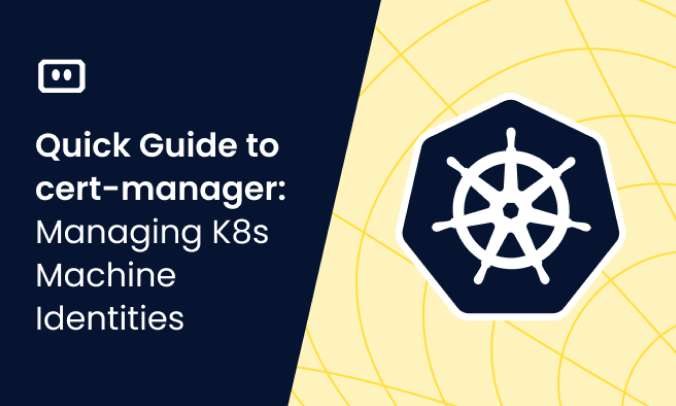What Is Kubernetes?
Kubernetes, also known as K8s, is an open-source platform designed to automate the deployment, scaling, and management of containerized applications. It groups containers that make up an application into logical units for easy management and discovery.
The platform was originally designed by Google and is now maintained by the Cloud Native Computing Foundation. Kubernetes serves as the foundation for several systems designed to simplify container management. It has been widely adopted due to its extensive features and robust community support.
Kubernetes is built around a framework that allows for distributed systems to run across multiple machines, which is an ideal environment for cloud-native applications. It also features a flexible service model, allowing for the use of microservices, a popular architecture in modern application development.
What Is OpenShift?
OpenShift is a family of containerization software solutions developed by Red Hat. It is essentially a platform as a service (PaaS) that runs on top of Docker containers orchestrated and managed by Kubernetes.
OpenShift provides an additional layer of abstraction on top of Kubernetes, simplifying the process of managing applications and services. It also adds developer and operations-centric tools on top of Kubernetes, allowing for rapid application development, easy deployment and scaling, and long-term lifecycle maintenance.
The primary goal of OpenShift is to provide a simple, scalable, and secure way for developers to build, host, and scale applications in a cloud environment. It does this by offering automated processes for development, testing, and deployment, thereby reducing the time and effort required for these tasks.
Kubernetes vs OpenShift: Key Differences
Now that we have a basic understanding of what Kubernetes and OpenShift are, let’s delve into the key differences between these two platforms.
1. Installation and Setup
When it comes to installation and setup, Kubernetes tends to be more complex compared to OpenShift. With Kubernetes, the setup usually involves a manual process of setting up the master and worker nodes, configuring network settings, and installing the command-line interface (CLI).
In contrast, OpenShift provides a streamlined installation process with its installer-provisioned infrastructure (IPI). The IPI takes care of the installation and configuration of the OpenShift cluster, reducing the complexity of the setup process.
2. User Interface
When comparing the user interface of Kubernetes vs OpenShift, there are noticeable differences. Kubernetes primarily uses a CLI-based interface, although it does offer a dashboard web interface. The standard Kubernetes Dashboard may require a steep learning curve for novice users and does not provide some advanced management features. There are several alternative open source dashboards that offer a better user experience.
OpenShift, on the other hand, offers both CLI and a built-in web-based user interface which is more comprehensive than the Kubernetes Dashboard. The web console of OpenShift is user-friendly, and provides a visual representation of the resources, making it easier for non-technical users to interact with the platform.
3. Project vs. Namespace
Another significant difference between Kubernetes and OpenShift lies in their approach to isolation and organization of resources. In Kubernetes, the term ‘Namespace’ is used to divide cluster resources among multiple users. A Namespace provides a scope for Names of resources, and it is a way to divide cluster resources between multiple users.
OpenShift, however, introduces an additional layer of abstraction called ‘Project.’ A Project is essentially a Kubernetes Namespace with additional annotations. It provides a space for users to organize and manage their applications, services, and resources. The Project feature gives OpenShift an edge in terms of user management and multi-tenancy support.
4. Security
Security is another area where Kubernetes and OpenShift differ significantly. Kubernetes does have robust security features, but they often need to be manually configured, and default settings are not secure.
OpenShift, on the other hand, takes a more proactive approach to security. It enforces stricter security policies by default, and its Security Context Constraints (SCC) mechanism provides fine-grained control over how pods interact with the underlying system. SCCs allow administrators to control permissions for pods, providing a higher level of security out of the box.
5. Networking
In Kubernetes, networking is implemented through plugins. As an open-source platform, it supports a wide range of networking plugins that can be installed and configured as per the project requirements. The networking model of Kubernetes is flat, allowing all pods to communicate with each other.
On the other hand, OpenShift implements networking using a software-defined networking (SDN) approach. This provides a unified cluster network that enables communication between pods across different nodes and projects. OpenShift also offers network policies for additional control over network traffic flow at the pod level.
6. Extensions and Plugins
Kubernetes is highly extensible and supports a wide range of plugins for various functionalities. For instance, you can integrate networking plugins, storage plugins, and even plugins for security. However, managing these plugins requires technical expertise and can be a complex task.
OpenShift, while also supporting a variety of extensions and plugins, distinguishes itself by providing a self-contained platform. It offers these functionalities as built-in features, reducing the complexity of managing separate plugins. This, however, reduces the flexibility of the platform compared to Kubernetes.
Kubernetes vs OpenShift: How to Choose?
Here are a few key considerations that can help you choose the most appropriate platform for your containerization project.
Flexibility vs. Ease-of-Use
Kubernetes: Offers extensive flexibility, allowing you to tailor the environment according to your specific needs. However, this flexibility comes at the cost of complexity. You’ll often need to manually configure settings, install plugins, and manage components. This level of control is ideal for organizations that have specialized needs and the expertise to manage a more complex system.
OpenShift: Aims to provide an easier, more streamlined user experience. While it does limit the level of customization compared to Kubernetes, it simplifies many tasks such as installation, user management, and application deployments. This is advantageous for organizations that prioritize quick deployment and ease-of-use over extreme customization.
Security Considerations
Kubernetes: Provides robust security features, but these typically require manual configuration. This offers a chance to create a security setup that’s well-tailored to your specific needs, but it does demand a level of expertise.
OpenShift: Comes with out-of-the-box security features like Security Context Constraints (SCCs) that enforce stricter policies by default. While this may limit certain operations, it reduces the burden of manual security configurations, which can be beneficial for organizations without dedicated security experts.
User Interface and Management
Kubernetes: Primarily focused on CLI-based interactions, although a dashboard web interface is available. It’s well-suited for users who are comfortable with command-line operations and scripting.
OpenShift: Offers both CLI and a more user-friendly web-based interface, appealing to both technical and non-technical users. The visual representation can be particularly helpful for monitoring and managing resources.
Extensibility and Plugins
Kubernetes: Offers high extensibility, with many plugins available for various functionalities. This is an advantage if you need specialized capabilities but can become complex to manage.
OpenShift: Also allows for extensions but integrates many common functionalities natively, reducing the need to manage separate plugins.
Community and Vendor Support
Kubernetes: Maintained by the Cloud Native Computing Foundation and has widespread community support, making it easier to find solutions to problems and qualified professionals.
OpenShift: Developed by Red Hat, it comes with commercial support options that might be preferable for enterprises requiring dedicated support and a Service Level Agreement (SLA).
Cost
Kubernetes: Being open-source, it’s free to use, but you may incur costs for additional tooling, plugins, or third-party services.
OpenShift: Requires a subscription for support services, which adds to the overall cost but could be justified by the ease of use and additional features it provides.
Improving Kubernetes and OpenShift Management with Komodor
Komodor is a dev-first Kubernetes operations and reliability management platform. It excels in providing a simplified and unified UI through which you can manage the daily tasks associated with Kubernetes clusters. At its core, the platform gives you a real-time, high-level view of your cluster’s health, configurations, and resource utilization. This abstraction is particularly useful for routine tasks like rolling out updates, scaling applications, and managing resources. You can easily identify bottlenecks, underutilized nodes, or configuration drift, and then make informed decisions without needing to sift through YAML files or execute a dozen kubectl commands.
Beyond just observation, Komodor integrates with your existing CI/CD pipelines and configuration management tools to make routine tasks more seamless. The platform offers a streamlined way to enact changes, such as scaling deployments or updating configurations, directly through its interface. It can even auto-detect and integrate with CD tools like Argo or Flux to support a GitOps approach! Komodor’s “app-centric” approach to Kubernetes management is a game-changer for daily operational tasks, making it easier for both seasoned DevOps engineers and those new to Kubernetes to keep their clusters running smoothly, and their applications maintaining high-availability.
To check out Komodor, use this link to sign up for a Free Trial


